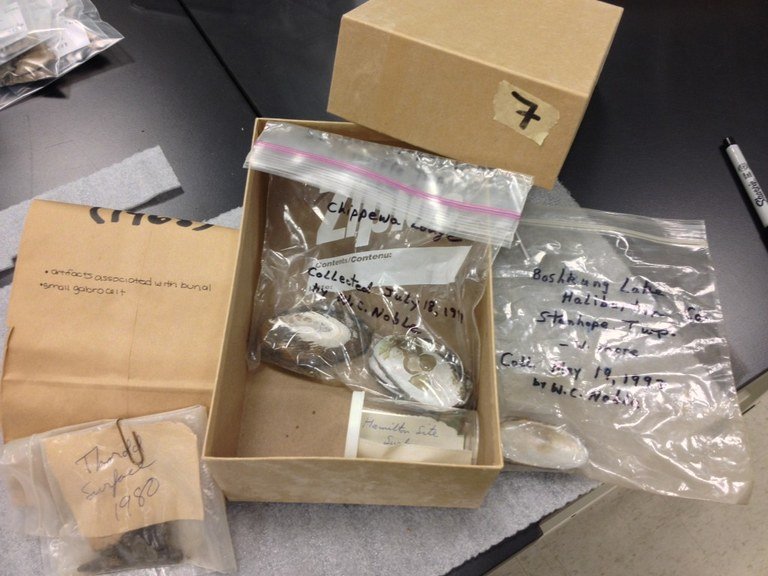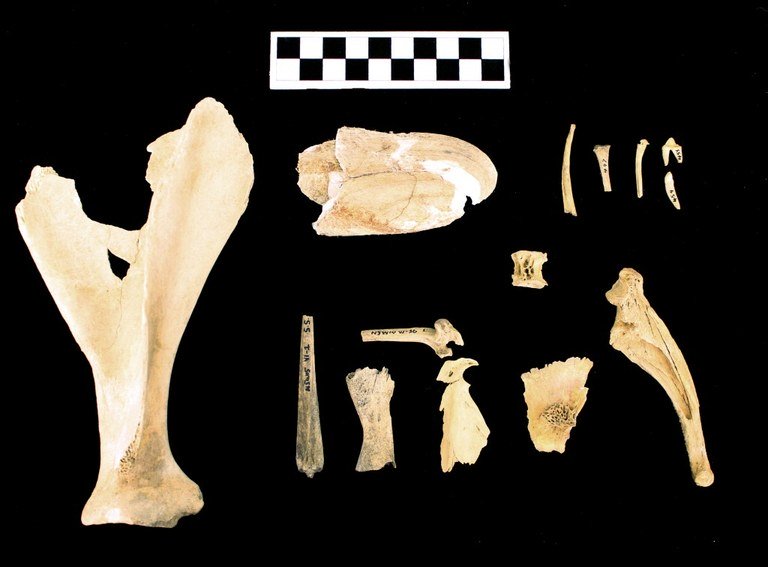The Value of Legacies: Revisiting Collections at Sustainable Archaeology McMaster
There is no doubt that McMaster’s Department of Anthropology and Sustainable Archaeology have benefited from legacy collections. In our last post, we detailed our methods for processing these assemblages to ensure their preservation and facilitate their use by researchers today. As the McMaster Legacy Collection Project progresses, the value of these materials and their reuse by different researchers becomes increasingly clear. In this post, we will highlight specific sites that embody the research potential, both tapped and untapped, of Sustainable Archaeology’s legacy collections.
Mar 06, 2016
The Materiality of Collecting: Small Finds and ‘Miscellaneous’ Sites
One legacy of archaeological practices in the past and the product of surface collecting is the plethora of small finds with little to no provenience data, references to sites that were never registered or recorded in detail, and groups of material that are difficult to catalogue and organise. While these ‘miscellaneous’ collections are in many ways far from our contemporary ideals of context and provenience, and are often difficult enough to make sense of in our process of re-bagging and cataloguing, they are nevertheless important resources for researchers.
For instance, these collections include extraordinary examples of material culture – or so-called ‘collector’s grade’, rare objects. Throughout their time as McMaster collections, these small finds and miscellaneous surface collected objects have been used in teaching, as typology examples for manuals and publications, and for community engagement projects. Exploring opportunities to make use of these collection creatively is part of Sustainable Archaeology’s vision for the future.

Unanalysed Diamonds in the Rough: Savage and Rocky Ridge Sites
Other legacy collections represent the full spectrum of states of research. Some sites were excavated but have no paper records associated with them and only limited knowledge of site locations and context. The Savage Site is one such collection. Although the artifacts are in good condition, there are no associated documents and no evidence that it was ever formally analysed (in fact, most of the artifacts look as though they are in the ‘just out of the ground’ state). We are actively seeking to fill in the blanks with this collection and prepare it for analysis; it is truly an untapped resource that could be of value to contemporary archaeological research.
Other sites were more heavily recorded but analysis was limited. The Rocky Ridge Site, for instance, was excavated in various stages between the 1940s and 2000s, including an excavation by Peter Ramsden and students from the University of Toronto in 1969 and 1970. The temporal and cultural breadth demonstrated by the materials recovered from this site are of high value to archaeological research of historical processes, however, systematic analysis was not completed on all of the material (particularly faunal) due to limits in time and funding. Like many of the collections held at Sustainable Archaeology McMaster, the Rocky Ridge assemblage provides a valuable opportunity to analyse existing collections with new research questions and technologies – benefiting from the work that has been done and contemporary innovations.

The Cleveland Site: Retrieving Faunal Remains
The Cleveland Site (AhHb-7), on the other hand, has been the focus of repeated study and analysis, including excavation and surface collection by amateur archaeologist Douglas Mannen, followed by excavations by William C. Noble in 1971. It has been identified as a Neutral Village site, dating to ca. 410 BP and the materials collected during the excavation include faunal, ceramics, lithics, cultigens and trade goods from house and midden features. The range and condition of the artifacts, and the records that accompany them, has been of benefit to diverse researchers.
In particular, the faunal material, first analysed and documented by Rosemary Prevec, has captured the attention of a number of researchers. For instance, the remains of a dog exhibiting a range of osteological pathologies has attracted a lot of interest. Results of these studies relating to the dog’s hypertrophic osteopathy and tuberculosis have added insight into the history of the people of this village site. Most recently, the dog remains were scanned and replicas of the skull were made using the 3D printing capabilities at Sustainable Archaeology: Western.
Legacy & Sustainability
The archaeological material from these different collections housed at Sustainable Archaeology: McMaster highlights the range of work that has previously been carried out, but also the diverse opportunities for research on extant archaeological collections. Whether artifacts are accessed for the first time since being excavated, or are re-analysed as new techniques are developed, the infinite research possibilities underlines the value of storing, preserving and cataloguing legacy collections. Re-use, afterall, is a core value of sustainability.
Article by Katherine Cook and Kate Paterson, Operations Managers